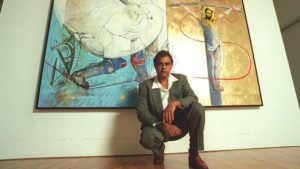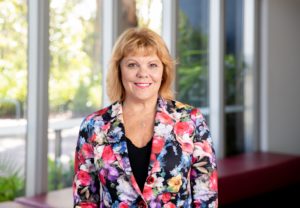A new exhibition shines a spotlight on the work of Griffith University’s first Aboriginal visual arts alumnus, the late Ron Hurley.
Known as one of the country’s leading contemporary First Peoples artists, he passed away in 2002.
A proud Gooreng Gooreng and Mununjali artist, he has been credited with forging a new style of art that drew on Western and Aboriginal traditions.
He worked as a signwriter and commercial artist in the 1960s before embarking on a formal art education at the Queensland College of Art (QCA).
In 1976, Ron became the first Aboriginal and Torres Strait Islander person to graduate from QCA and continued to break down barriers throughout his career by becoming the first Aboriginal member of the Board of Trustees of the Queensland Art Gallery, Chairman of the Australia Council Visual Arts Committee and co-designer of the Sydney Olympics logo.
‘Nurreegoo — An Ode to Ron Hurley 1946-2002′ is currently on show at the QCA Glass Box Gallery at South Bank.
Ron’s art paid tribute to Aboriginal people, from portraits of public figures like Albert Namatjira and Neville Bonner, to work that immortalised his Gooreng Gooreng Elders and family.
The exhibition showcases work across various media, including paintings, sculpture, ceramics and prints.
It was curated by Contemporary Australian Indigenous Art program director Dr Carol McGregor and Ron’s daughter Angelina Hurley, who is the first Aboriginal and Torres Strait Islander doctoral candidate at Griffith Film School.
Angelina said her father would have been delighted to see his work recognised by the QCA.
“Nurreegoo is the Gooreng Gooreng word to describe an artist, a practitioner of the craft,” she said.
“Art was his passion in life, and he was proud to be a graduate of the Queensland College of Art.”
“He would have been chuffed to have his work exhibited on campus to inspire the next generation of artists.”
Angelina said her father was determined to get a formal art education to forge his career as a practising artist.
“There was no student assistance in those days — you were on your own,” she said.
“I remember as a very young child watching him head off to the QCA on the bus from our home in Cleveland with huge portfolios under his arm.
“He graduated at a time when contemporary Indigenous art wasn’t as embraced as it is today. It was a struggle, but he was such a champion of Indigenous art and a mentor to younger artists.”
Pro Vice Chancellor (Indigenous) Professor Cindy Shannon AM said that she was both honoured and privileged to work under Ron’s leadership in her first job at the Department of Aboriginal Affairs in the early 1980s.
“I am delighted that Griffith has recognised Ron’s very significant achievement in becoming the first Indigenous graduate of QCA, and his success and influence as an Aboriginal artist.”



